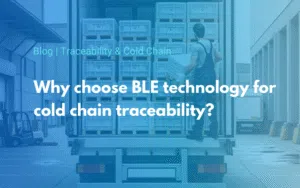Compatibility between GPS trackers and Bluetooth sensors, everything you need to know
Reading time
Level

What is a GPS tracker ?
GPS tracking is a technology that uses satellite signals to determine the real-time location of a device or vehicle. Originally developed by the U.S. Department of Defense for military purposes, GPS, which stands for Global Positioning System, has become an integral part of a variety of applications.
A GPS tracker is a specialized device designed to interact with GPS, receiving signals from satellites to precisely determine its location. This compact yet powerful technology facilitates real-time tracking of objects, vehicles or individuals. GPS trackers are available in a variety of forms, from stand-alone units to integrated modules into smartphones or components built into various pieces of equipment.
GPS trackers are not limited to tracking vehicles and equipment; they are also widely used to monitor people’s movements through wearables such as smartwatches, smart safety vests or worker identification badges. Today, GPS tracking systems find applications in fields such as fleet management, asset tracking and personal monitoring.
How does a GPS tracker work?
A GPS tracker works by receiving signals from a network of satellites orbiting the Earth, transmitting data on their precise positions and times of transmission. Using triangulation, the GPS tracker calculates its position by analyzing the travel times of signals from at least three satellites. This information enables the plotter to determine its exact coordinates on the Earth’s surface. Once the calculation is complete, the GPS tracker transmits the acquired location data, providing real-time information on the object, vehicle or individual being tracked, to a central server or user device. The method of data transmission can vary, with some trackers using cellular networks or other communication technologies.
In this article, discover major GPS trackers that integrate seamlessly with our Bluetooth industrial sensors. Our experts take an in-depth look at the functionality and versatility of these trackers, to make tracking simpler and more efficient.
What is the difference between GPS navigation and GPS tracking?
GPS navigation and GPS tracking, although both utilizing Global Positioning Satellites, serve distinct purposes and operate differently. GPS navigation primarily involves the use of apps, built-in systems, or devices to provide directions and location information to users. These systems receive signals directly from GPS satellites, supplemented by Wi-Fi signals and cellular towers for accuracy. GPS navigation focuses on providing real-time guidance, traffic updates, and location-based information to users, aiding in navigation and destination finding.
In contrast, GPS tracking involves the use of devices that receive information from GPS satellites and transmit this data to remote recipients. These tracking devices can be integrated into vehicles or objects, either as hardware components or software applications. They collect location data and send it to designated recipients, enabling remote monitoring of the object’s whereabouts.
GPS tracking is commonly used for fleet management, asset tracking, and surveillance purposes, providing insights into location, speed, behavior, and other pertinent information from a distance. While GPS navigation helps users navigate to specific destinations, GPS tracking facilitates remote monitoring and management of assets and vehicles.
What are the benefits of a GPS tracker in telematics ?
In the field of Internet of Things (IoT) applications, the integration of GPS tracking offers a range of benefits that significantly improve operational efficiency.
GPS trackers play a key role in telematics, providing accurate, real-time location data for vehicles, assets and personnel. In telematics systems, GPS trackers are typically installed in vehicles or attached to assets to monitor their movements and activities. These trackers use signals from GPS satellites to determine their precise position, which is then transmitted to a database or central server via cellular networks or other communication channels.
Through various industries especially telematics, GPS trackers enable a wide range of applications, including:
Fleet Management
GPS trackers allow fleet managers to monitor vehicle location and movement in real-time, providing valuable insights into vehicle utilization, fuel consumption, and driver behavior. Integrated with on-board telematics systems, GPS tracker data informs decisions to enhance fleet efficiency, promote driver safety, reduce operating costs, and improve productivity. Additionally, GPS trackers play a key role in effective driver management, enabling route optimization, monitoring driving patterns, and ensuring safety compliance.
Reinforced safety
Equipping a fleet of vehicles with an on-board telematics solution will also make it possible to reinforce the security of users and equipment. Indeed, thanks to the use of GPS units, it is possible to locate vehicles in real time, thus protecting them against theft. But it is also possible, thanks to the use of Bluetooth beacons combined with GPS trackers, to ensure, for example, that drivers’ break times are effective or to analyze risky driving behavior. This comprehensive approach to security allows for quick response to unauthorized movements or potential security incidents, bolstering protection for valuable assets across various industrial sectors.
Asset tracking
Asset tracking becomes more efficient with GPS technology, which extends beyond vehicles to include logistics and construction equipment, trailers, containers and other valuable assets. This ensures accurate tracking of asset location, usage and maintenance requirements, enabling optimized asset lifecycle management.
Predictive maintenance
Implemented in an IoT fleet management solution, GPS trackers can provide insights into vehicle usage patterns, mileage, and engine hours, allowing fleet managers to schedule preventative maintenance and repairs more effectively. By proactively addressing maintenance issues, businesses can minimize downtime, extend asset lifespan, and reduce operational costs.
Reduce operational costs
Acquiring real-time insights into business operations empowers organizations to make informed decisions that can ultimately drive down operating costs. By proactively identifying and addressing issues as they arise, potential cost escalations can be prevented down the line.
One of the key advantages of utilizing GPS trackers is their ability to streamline processes and simplify data collection. With GPS technology, pertinent information is gathered and stored centrally, accessible to all team members who require it. This digitization of operations enhances efficiency and facilitates smoother workflow management.
Improved productivity
GPS trackers enable companies to keep accurate control of the time spent by drivers on the road, on different worksites and on other tasks, promoting greater efficiency and productivity. By leveraging GPS data, companies can optimize routes, ensuring that the nearest vehicle is dispatched to each job site, thus avoiding wasted fuel and time. This strategic approach not only minimizes operational costs, but also optimizes the use of resources, ultimately helping to improve results.
What is the difference between a GPS tracker and a Bluetooth beacon?
Choosing between GPS trackers and Bluetooth beacons is becoming essential in today’s technological environment for companies looking for the ideal tracking solutions. GPS trackers, which use satellite signals, enable the precise, real-time location of a variety of assets, from vehicles to personal items.
Their versatility extends to outdoor scenarios, enabling navigation, fuel monitoring and theft prevention. Bluetooth beacons, on the other hand, which rely on Bluetooth Low Energy (BLE) technology, specialize in enclosed areas and are proving cost-effective for tracking tools and equipment, as well as improving worker safety.
Combining the two technologies can offer complete tracking solutions. This combination enables companies to leverage the strengths of each technology to suit specific use cases and requirements.
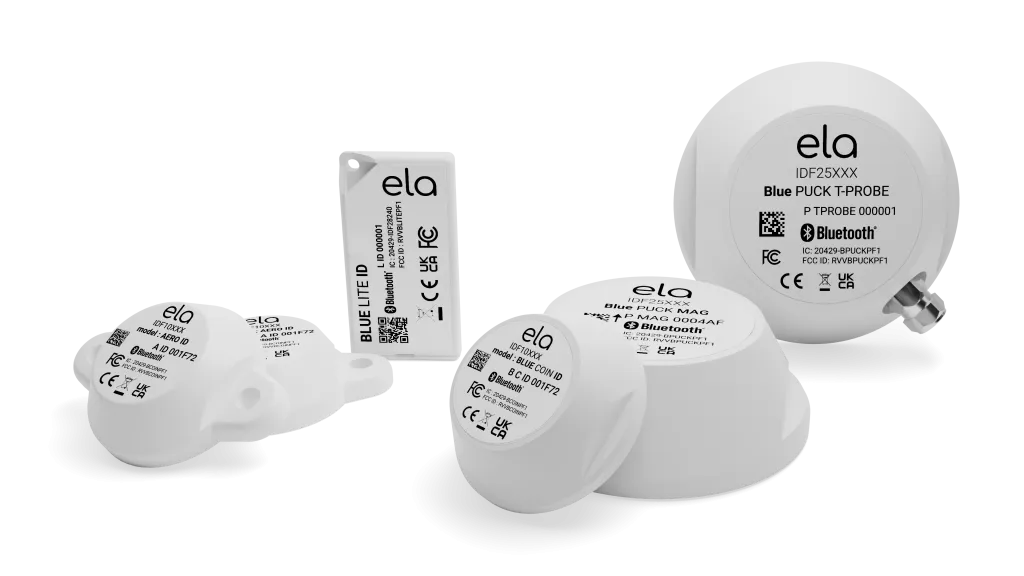
Discover our beacons and Bluetooth sensors compatible with the leading GPS trackers on the market.
Interoperability of GPS trackers and Bluetooth technology
Bluetooth GPS trackers work by combining GPS technology for location tracking with Bluetooth functionality for seamless communication with nearby Bluetooth Low Energy (BLE) tags, sensors, or accessories. These trackers act as Bluetooth Gateways, allowing them to detect and communicate with nearby BLE devices.
The trackers use GPS to determine their own location accurately, providing real-time location data. Simultaneously, they scan for nearby BLE accessories or sensors, continuously monitoring their presence. When a BLE device is detected, the tracker collects data from it and transmits it to a designated end platform, such as a cloud-based server or a user’s mobile device.
These Bluetooth GPS trackers come in various forms, including both wired and battery-powered solutions. They can be installed on a wide range of assets, whether mobile or static, to enable comprehensive asset tracking and management. By leveraging both GPS and Bluetooth technologies, these trackers offer enhanced functionality for monitoring assets, improving efficiency, and streamlining management processes.
Leading GPS Trackers compatible with our Bluetooth sensors
1. Digital Matter

Digital Matter Remora 2, a robust GPS tracking device and Bluetooth gateway, powered by a long-life battery, with tamper detection and 10-year autonomy. Ideal for asset tracking, sensor and tag monitoring, theft recovery, etc. integrates seamlessly with our Bluetooth sensors, enhancing asset tracking and monitoring. Discover the Digital Matter Oyster 3 compatible with our Bluetooth sensors.
2. Geotab
Geotab IOX-BT is designed to monitor Bluetooth proximity tags, including those with public MAC addresses. These beacons, when attached to tools and equipment, play a vital role in optimizing asset utilization, reducing the impact of misplaced equipment, improving productivity, reducing operational costs and ensuring on-time delivery. IOX/BT enhances your asset management by integrating seamlessly with our Bluetooth sensors for precise monitoring. GeotabG09 propels the fleet into the future with increased capacity for extended native vehicle support, better support for fuel economy, electric vehicles and global expansion.
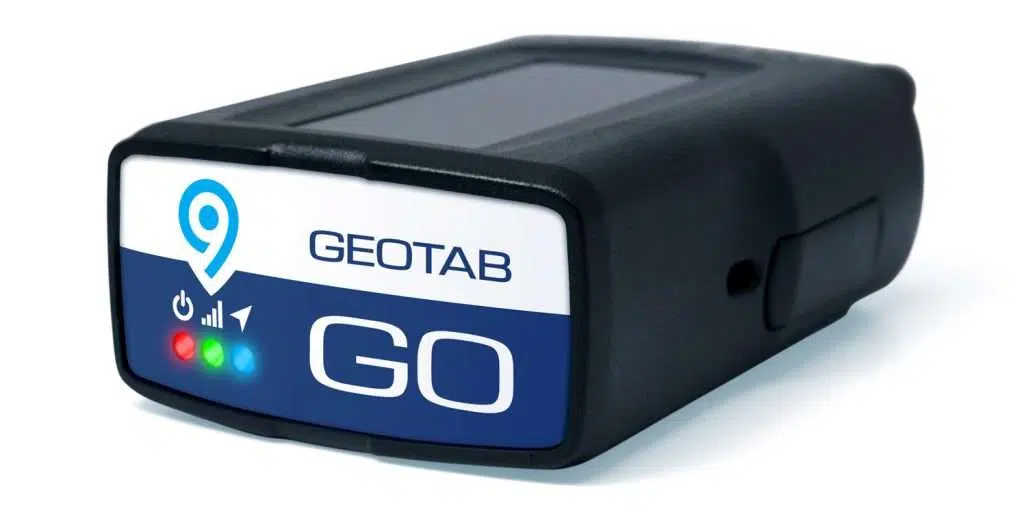
3. ACTIA

ACTIA iCAN is a multi-brand Plug & Play telematics box that connects to the vehicle without assembly to read all the vehicle’s original manufacturer data. It offers the quality and safety guarantees of an “original equipment” automotive supplier. With nearly 15,000 ELA Innovation Bluetooth beacons in service, ACTIA Group’s ICAN is one of the telematics boxes integrating the Blue PUCK, COIN and Blue LITE ranges.
4. ATrack

ATrack’s LTE telematics gateway devices can connect to multiple Bluetooth sensors, enabling continuous collection and transfer of sensor data. To ensure top performance, the AK7V telematics gateway collects data on the environment and temperature of refrigerated containers from our Blue PUCK T-PROBE, a Bluetooth temperature sensor that meets the challenges of cold chain traceability. The integration of the ATrack AS11 with our BLE sensors offers an ideal asset management solution. Enhancing the security of valuable assets and maximizing their efficiency.
5. Teltonika
Teltonika FMB120 is a 2G car tracker offering comprehensive remote monitoring capabilities, making it an ideal choice for rental, taxi, and logistics companies, as well as public transport and personal vehicles. Our Bluetooth sensors seamlessly integrate with Teltonika FMB920 and FMB001 GPS trackers, enhancing capabilities for driver identification, behavior monitoring, and ensuring driver safety.
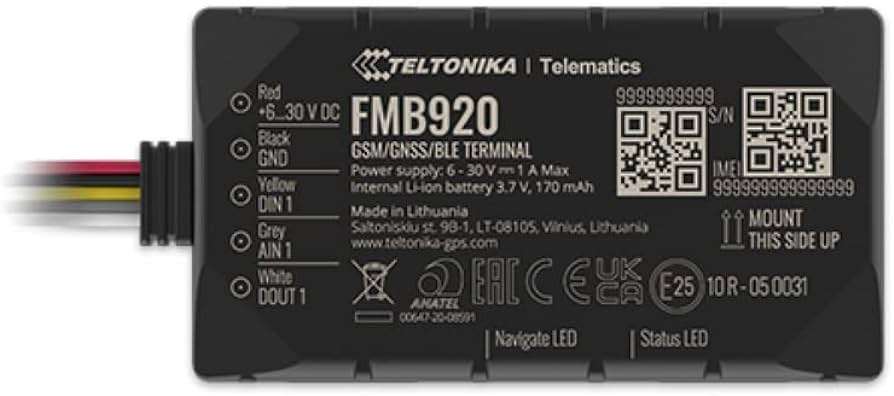
6. Ruptela
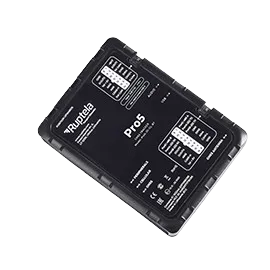
Ruptela PRO 5 is an advanced GPS tracker designed for different types of vehicle, including trucks, buses and specialized machinery. This tracker offers advanced features, including the ability to read on-board computer (CAN) data, monitor driver actions, manage fuel, and more.
7. Sensolus
Sensolus Track 1100 and 1110 are trackers offering extended battery life thanks to their low power consumption. Both are compatible with our Bluetooth sensors and use NB-IoT connectivity for reliable data retrieval. What’s more, they enable precise, general and area-based localization, meeting a variety of tracking and monitoring needs.

8. Robustel
Robustel’s R2110 High-Speed Smart IoT Gateway delivers advanced wireless connectivity for mobile, smart cities, and industrial applications. With dual cellular modules, it ensures immediate failover to a secondary connection, providing exceptional reliability for IoT applications in dynamic environments and industrial monitoring systems requiring constant uptime.
9. Navtelecom
Navtelecom Smart S-2433, a GPS tracker, features high-quality components to resist voltage fluctuations (up to 350 V). Featuring an optional built-in battery with overload protection, accelerometer, 1-Wire, EcoDriving, automatic firmware updates, Bluetooth and an IP54 enclosure, it offers a robust, full-featured solution.
10. Suntech
Suntech’s ST4955LCBW is a Bluetooth-enabled GPS tracking device utilized across diverse applications. Seamlessly integrates with our Bluetooth sensors. Additionally supports an optional one-wire temperature sensor. Ideal for applications such as trailer or container management and vehicle tracking.
11. Lantronix
Lantronix FOX3 is a compact, all-in-one cellular telematics gateway combining a rich connectivity choice with our powerful Edge intelligence. The cellular FOX3 or SGX5150 preconfigured with a set of BLE beacons capture sensor data such as presence, identification, temperature, humidity and location of goods, people or vehicles.
12. Ercogener
Ercogener’s EG-IOT 1A81 and EG-IOT 1AA6 enclosures are distinguished by their robustness and durability, with IP67/IP69k waterproof certification and shock resistance up to IK09. Equipped with the “EaseEG-IoT” application and supporting a 3FF micro SIM, they offer an integrated solution for demanding telematics and geolocation applications, ensuring monitoring, versatility and precision.
In this article, our experts delve into the world of GPS trackers, emphasizing their compatibility with a diverse array of partners.
Additionally, our beacons & Bluetooth IoT sensors also offer seamless integration with leading GPS tracker or telematics boxes brands such as the products from Globalstar, Astus, Avema, Cal Amp, Cellocator, Galileosky, Solidrun, TE Connectivity, Telic, Viasat, Xirgo, Quecklink, and many others. This integration enhances connectivity and functionality across various applications, ensuring efficient tracking solutions.

